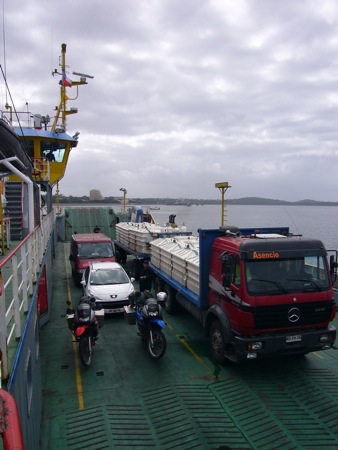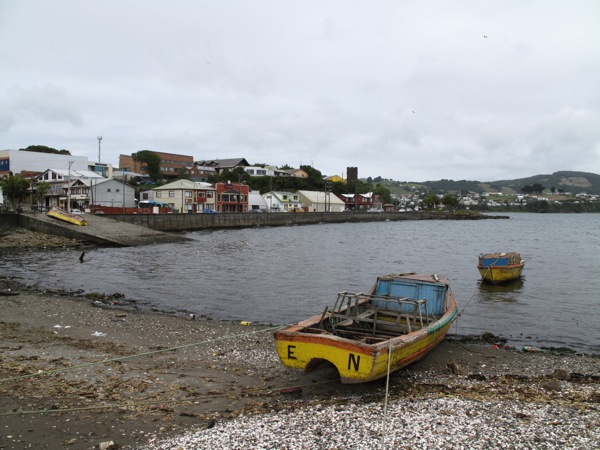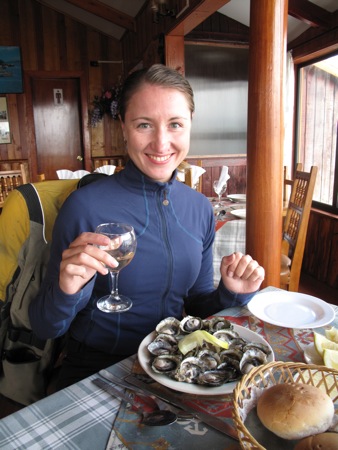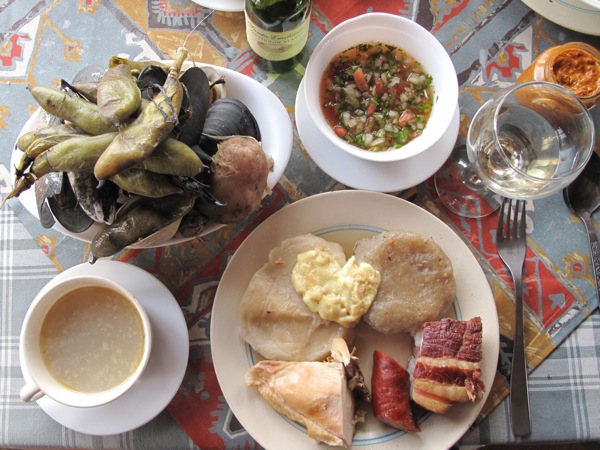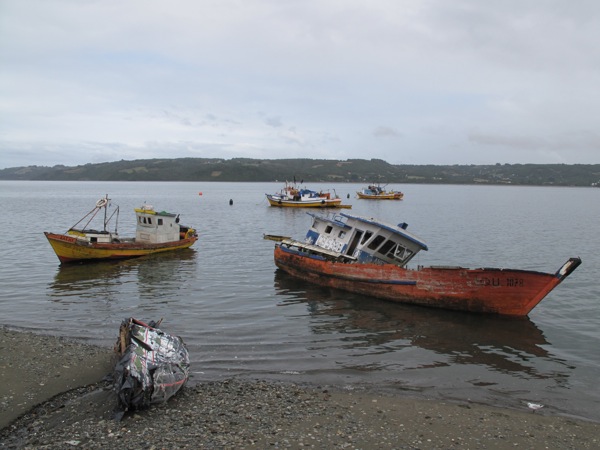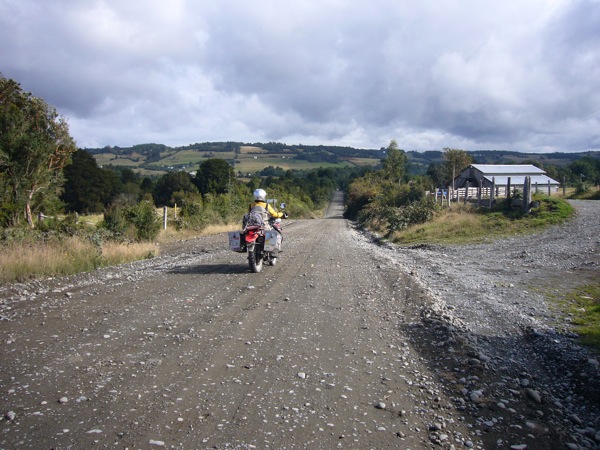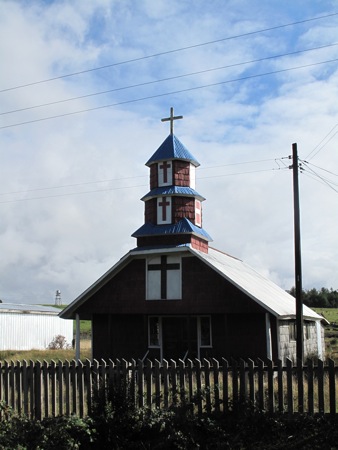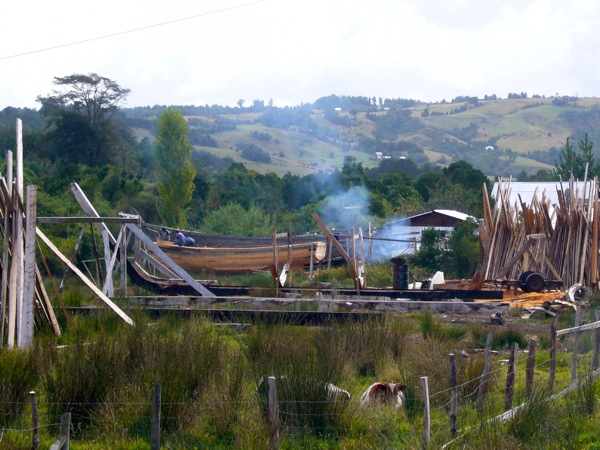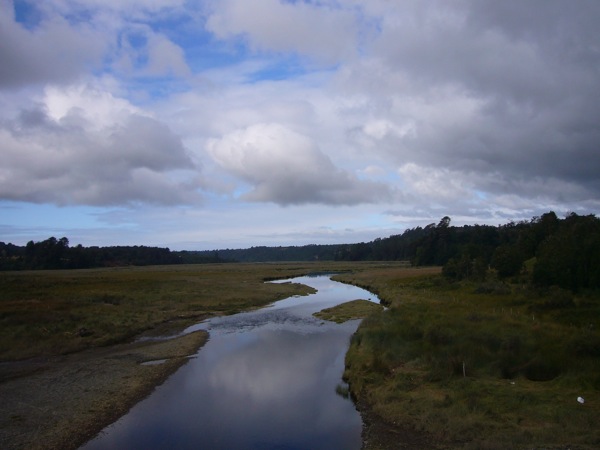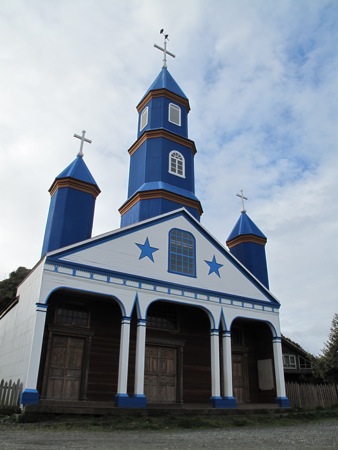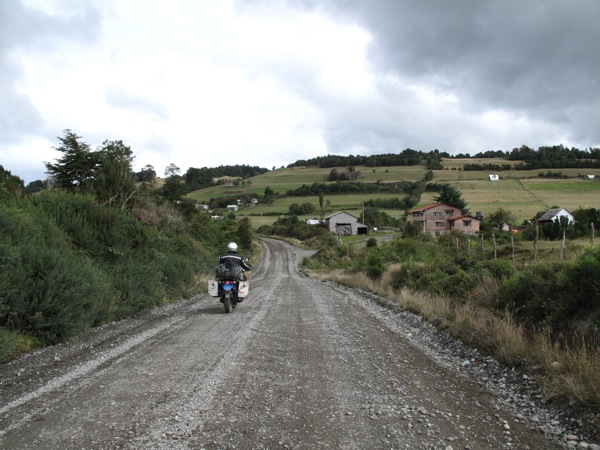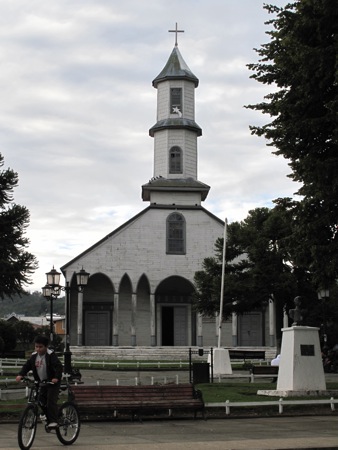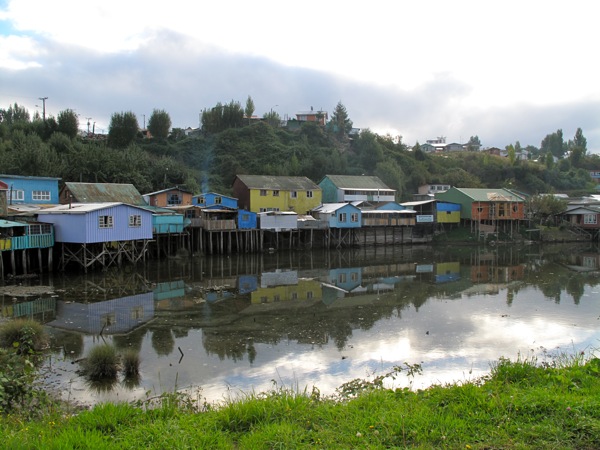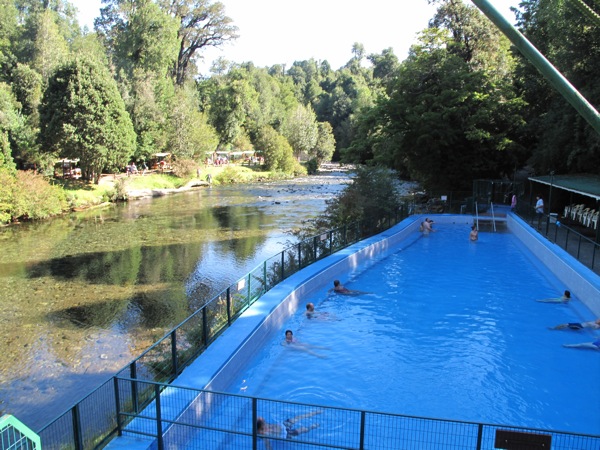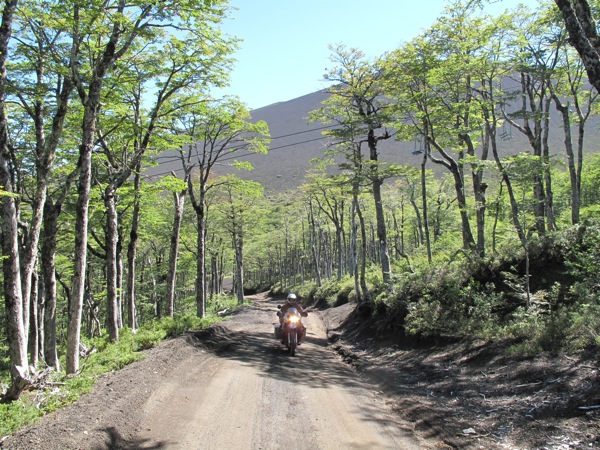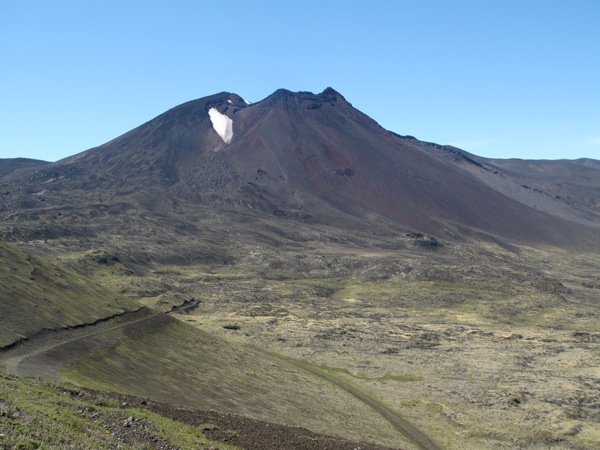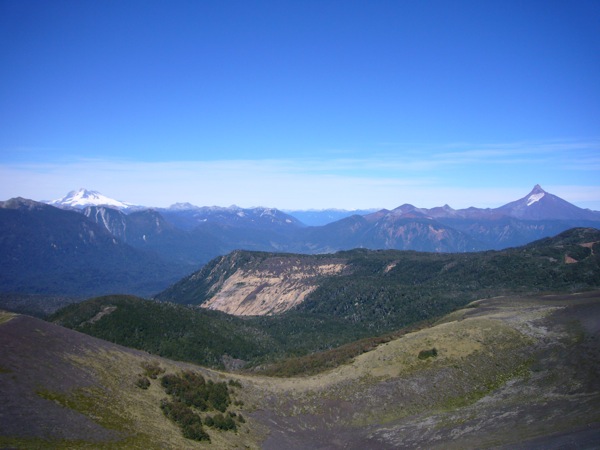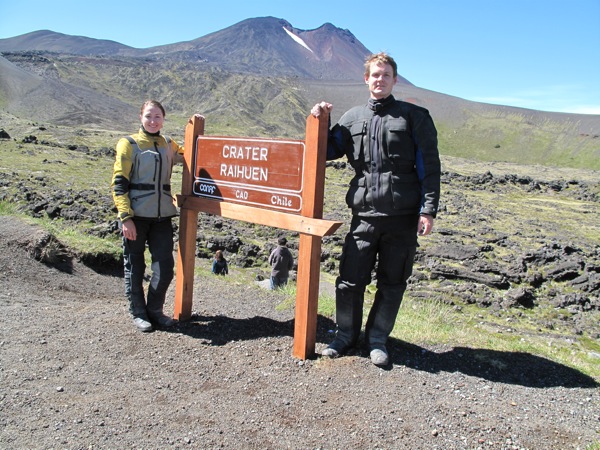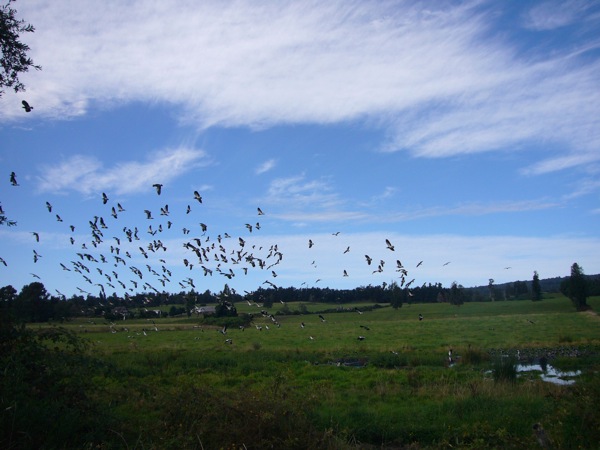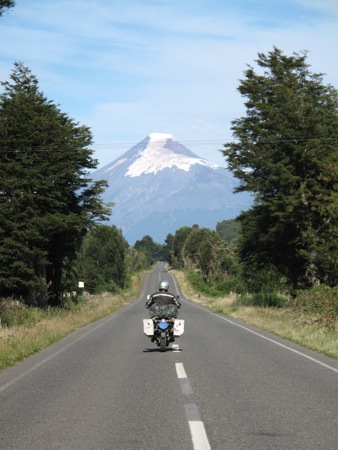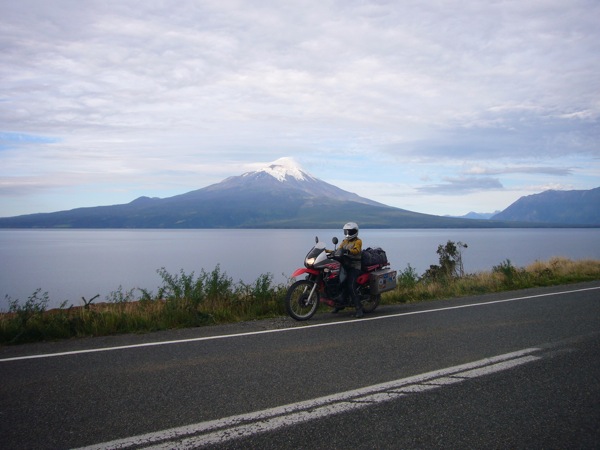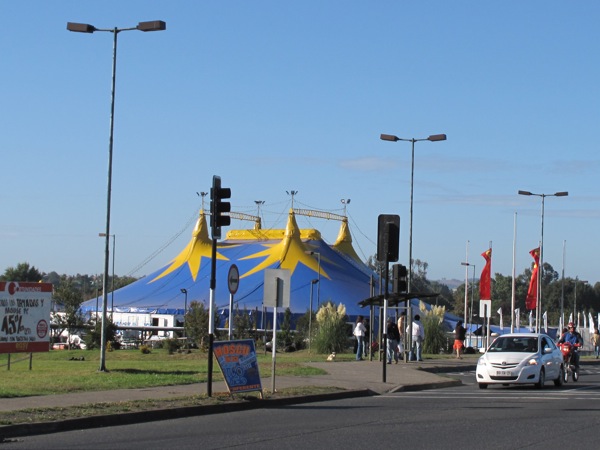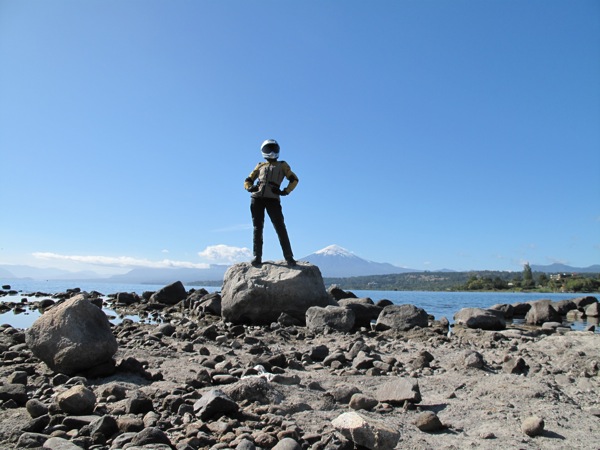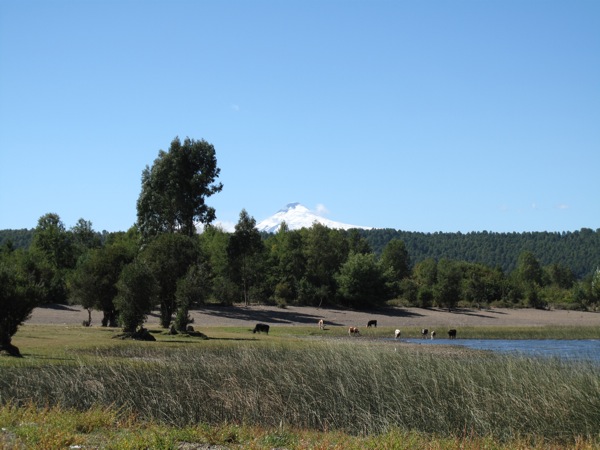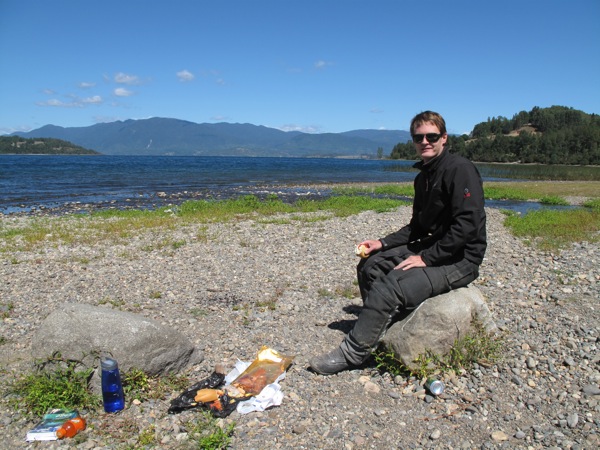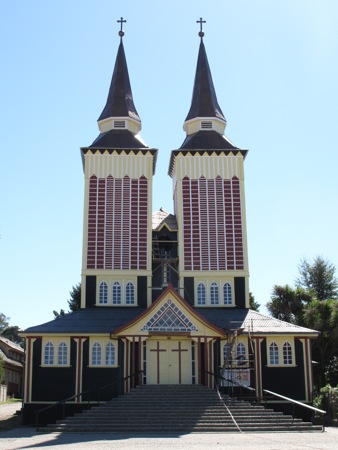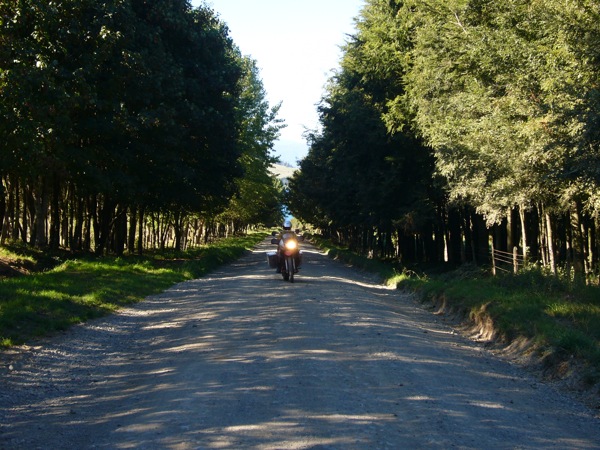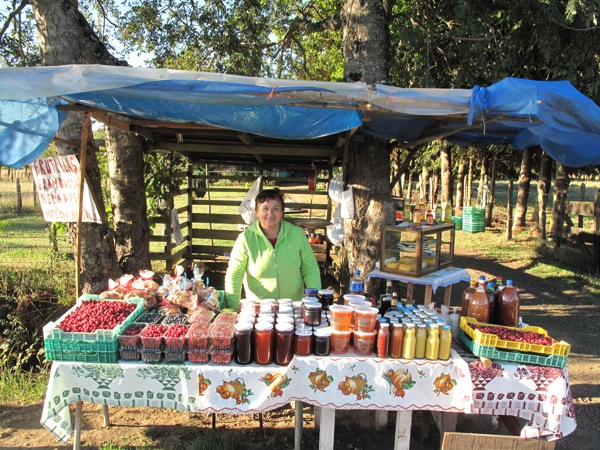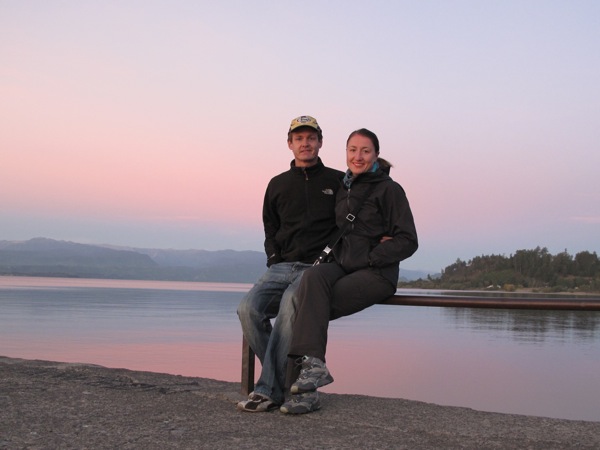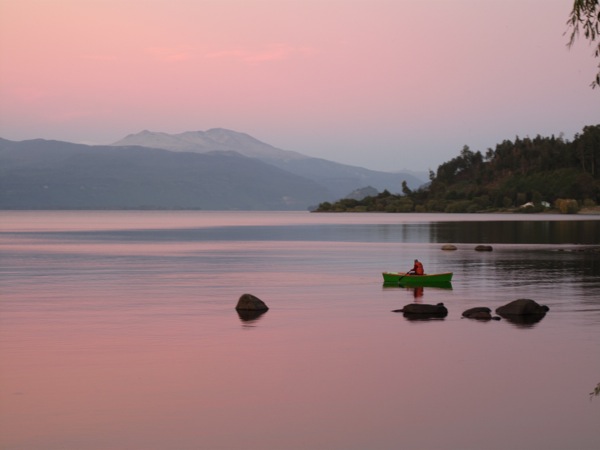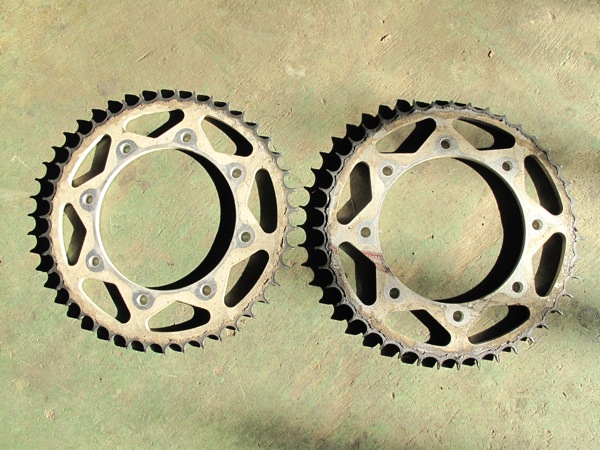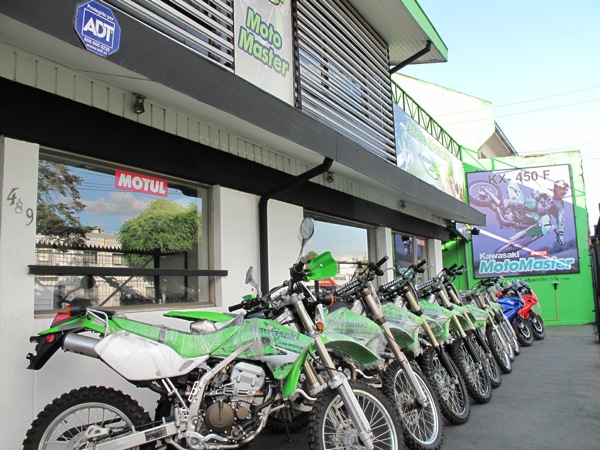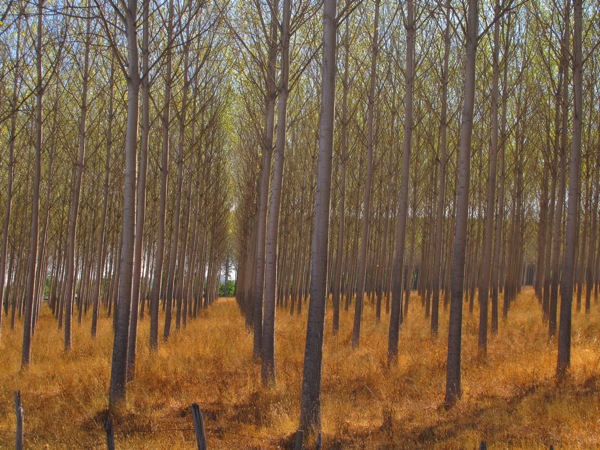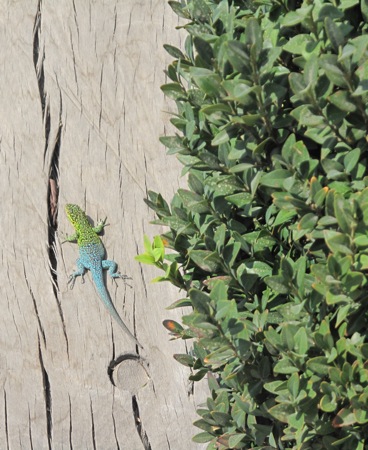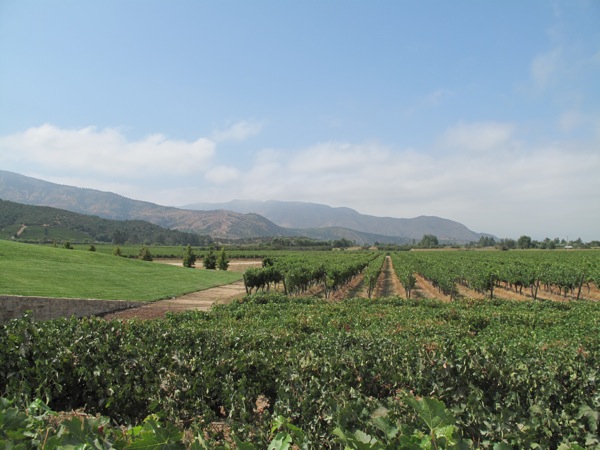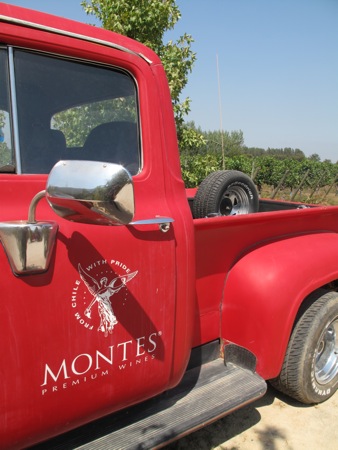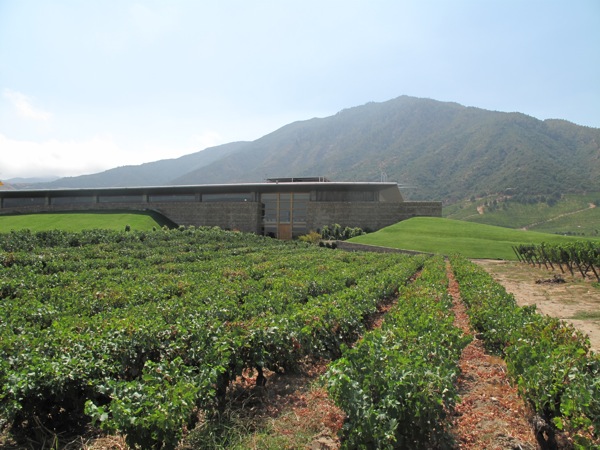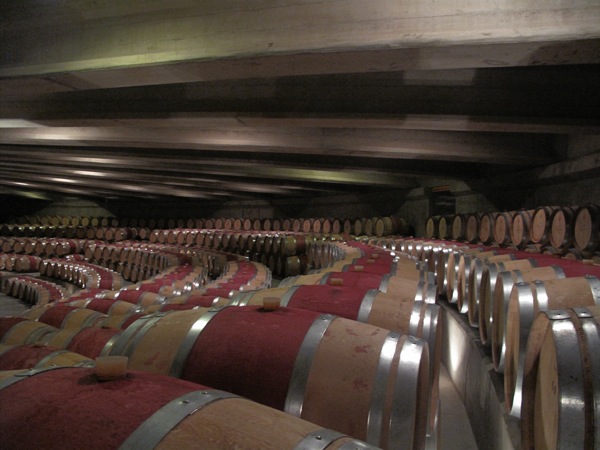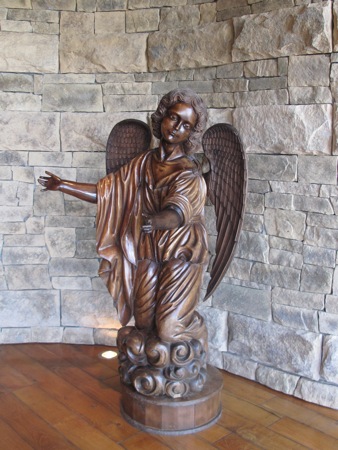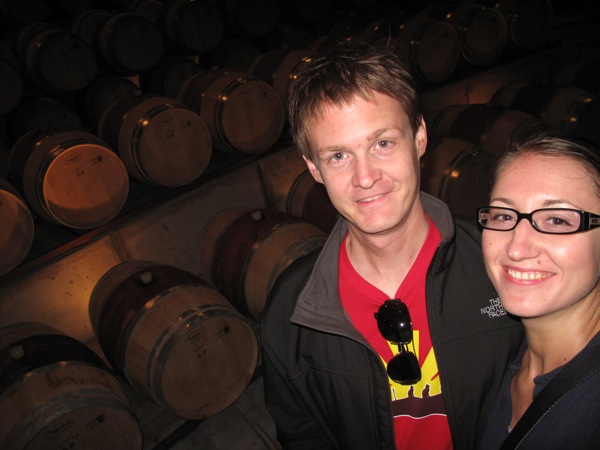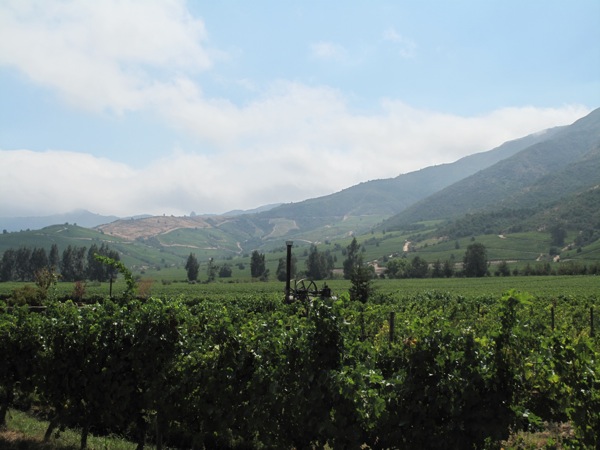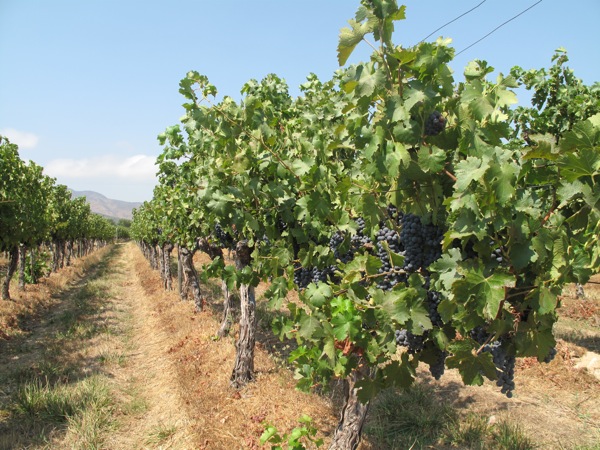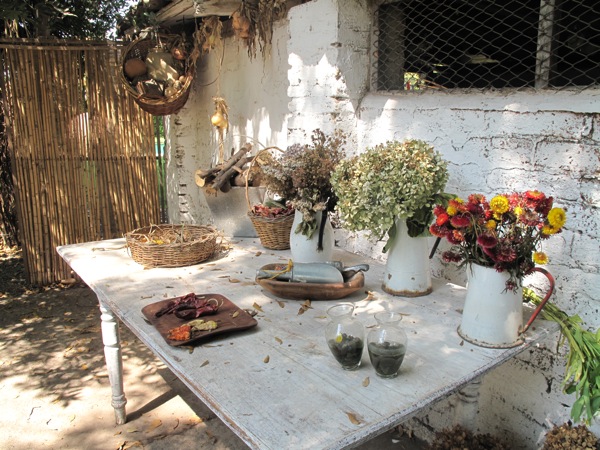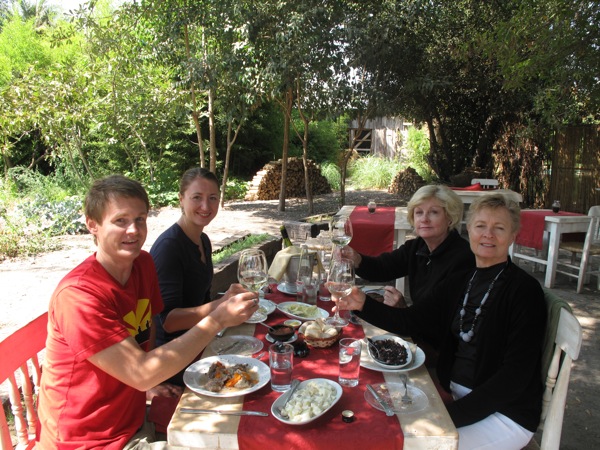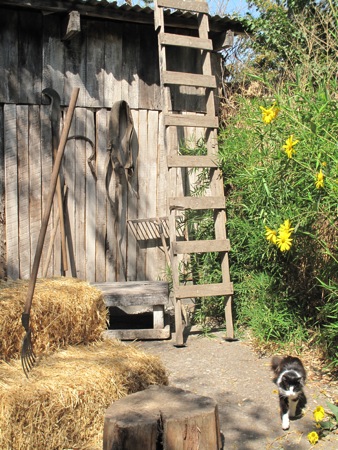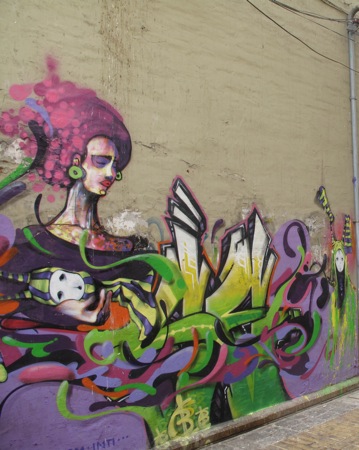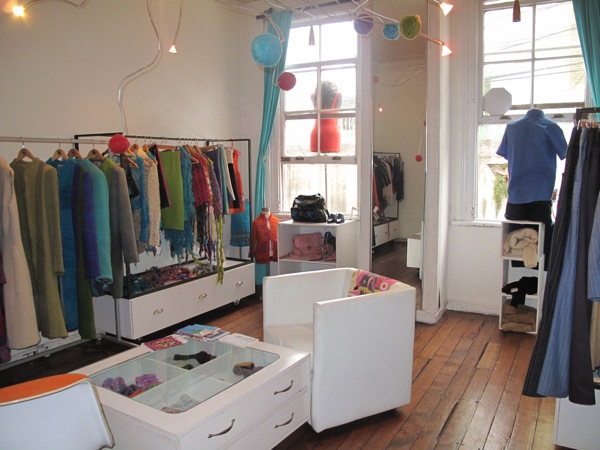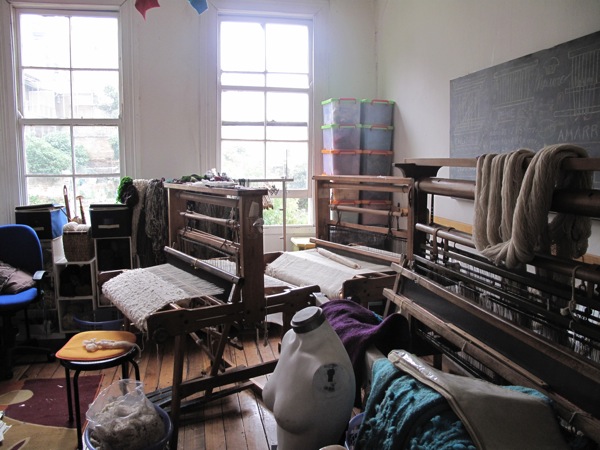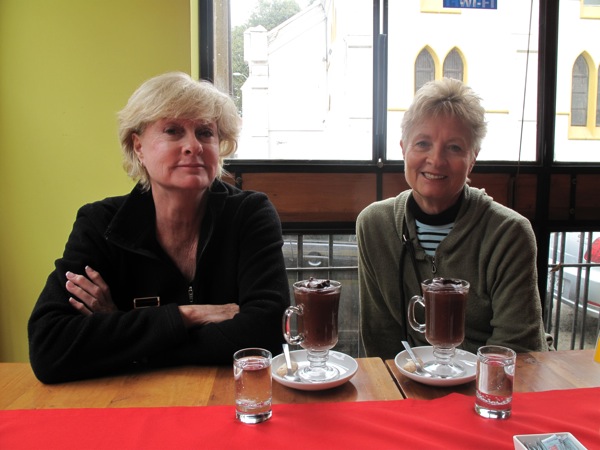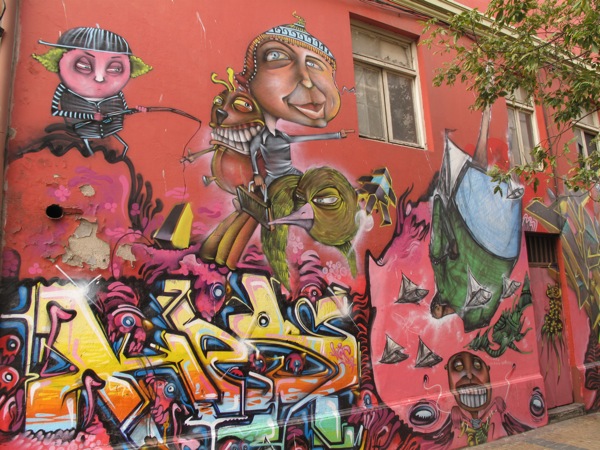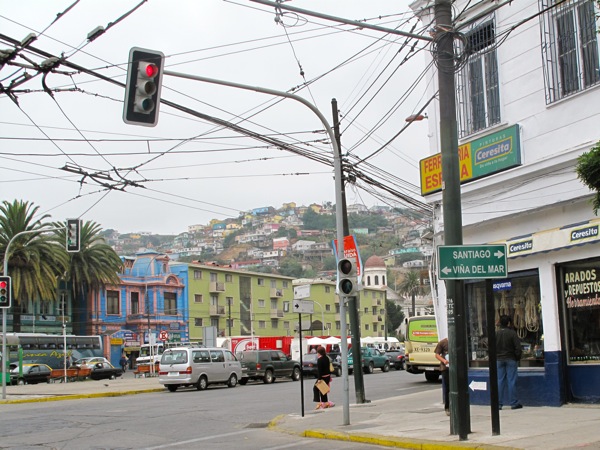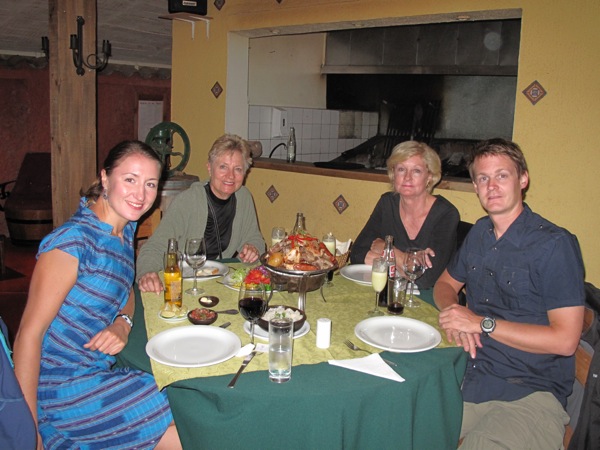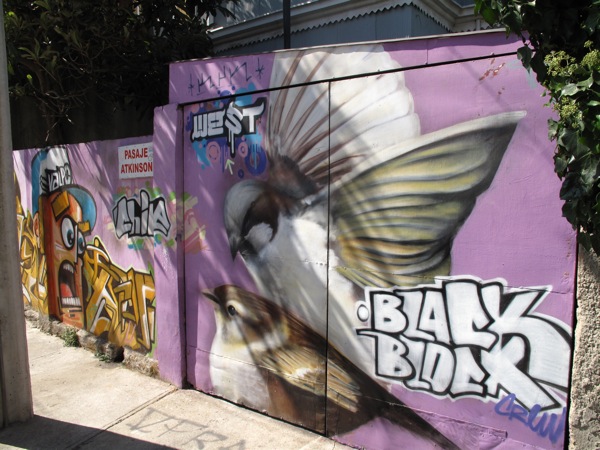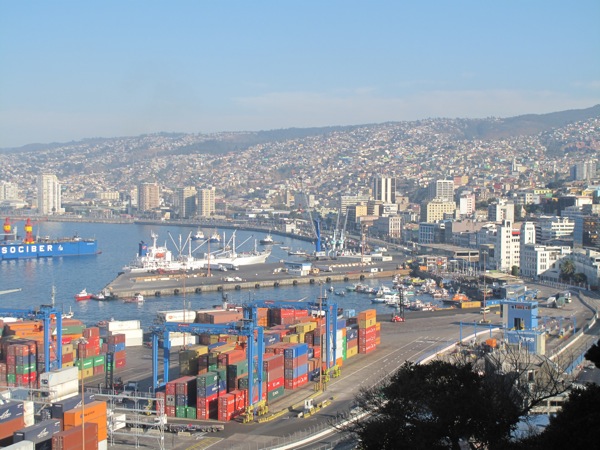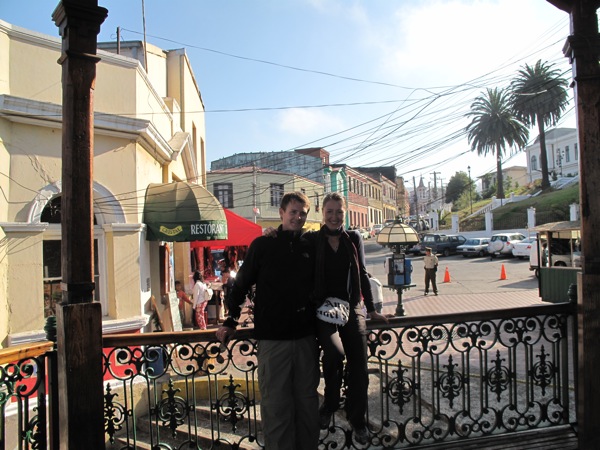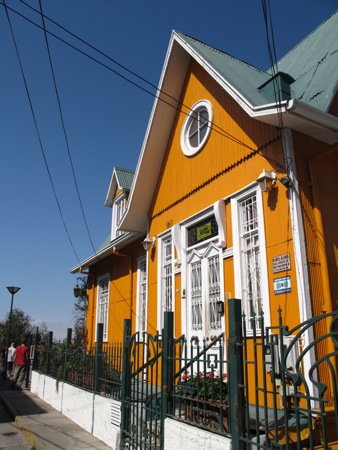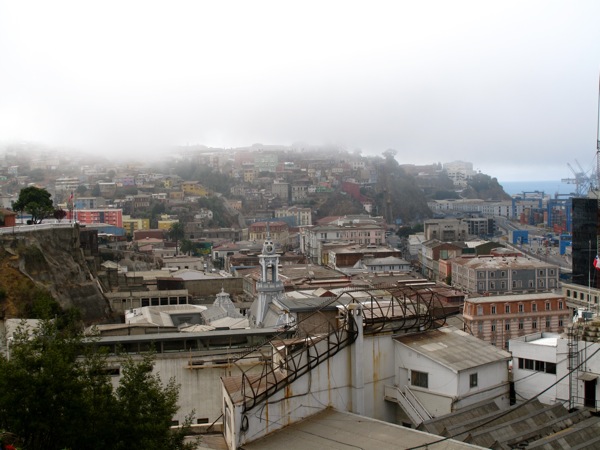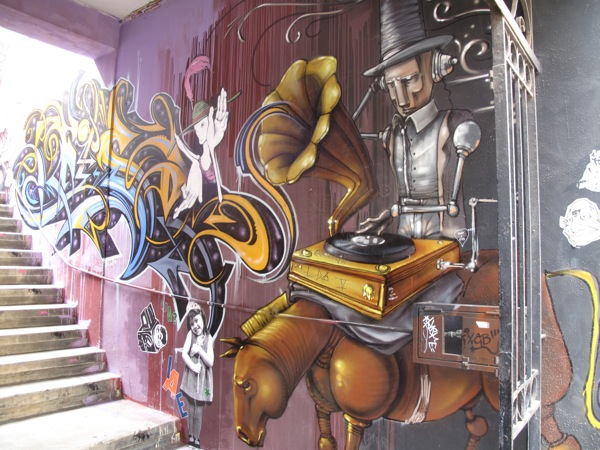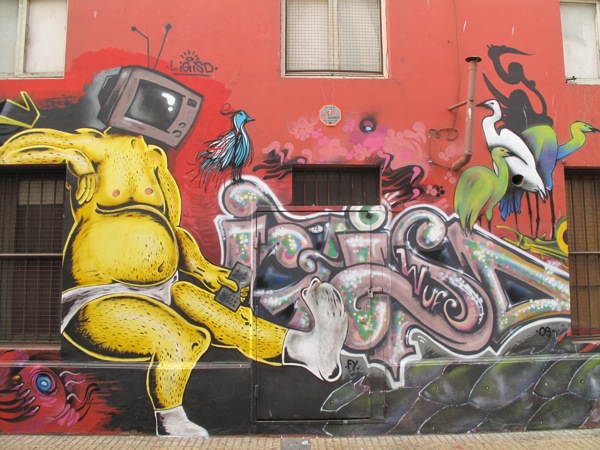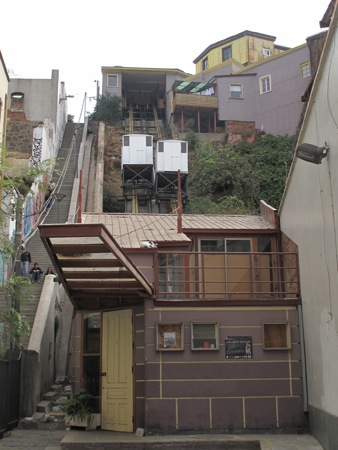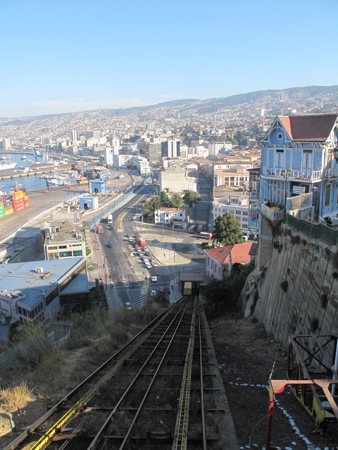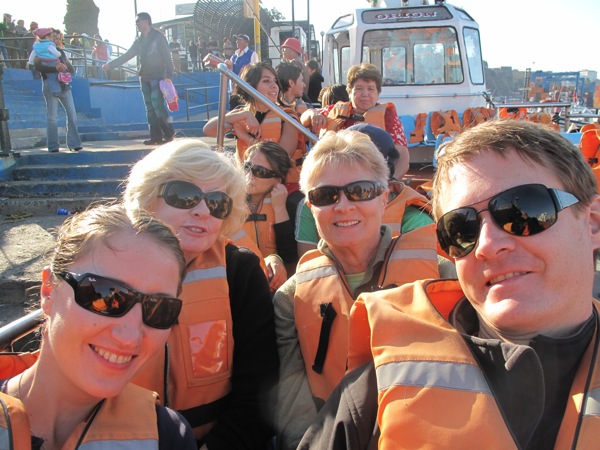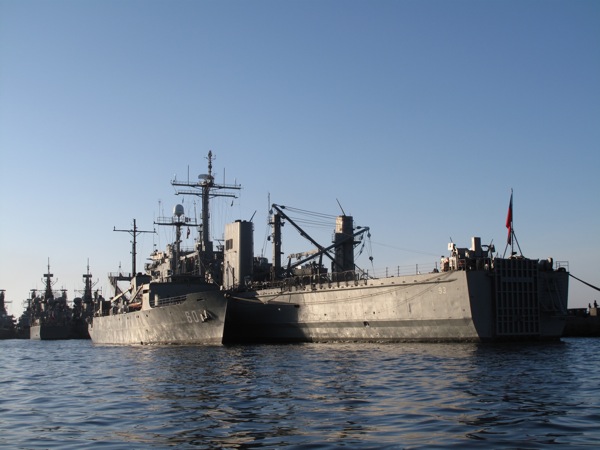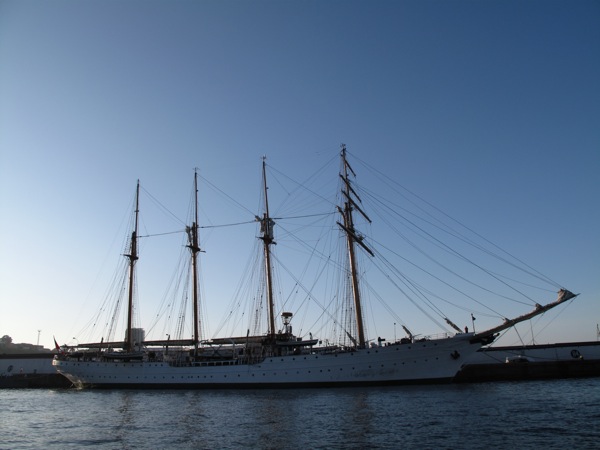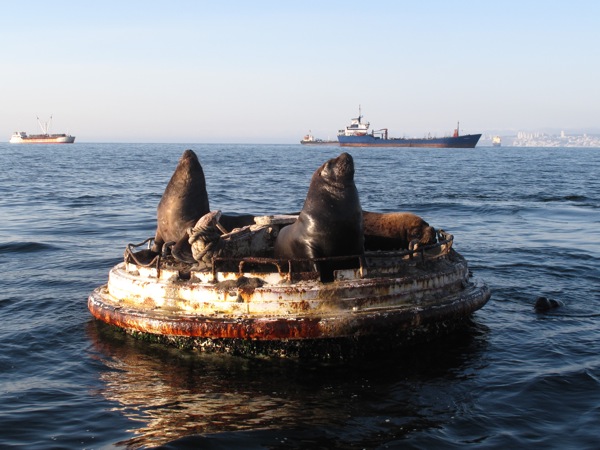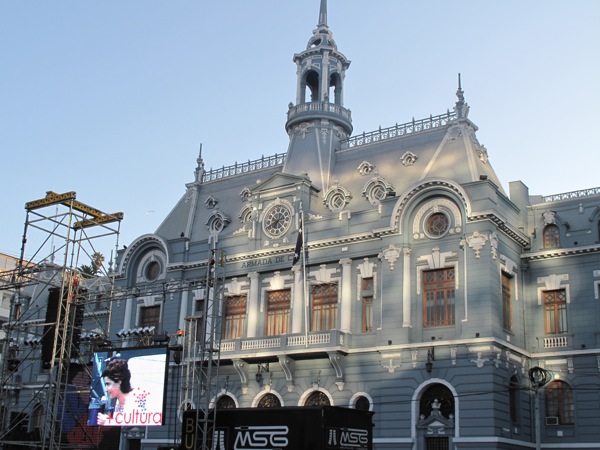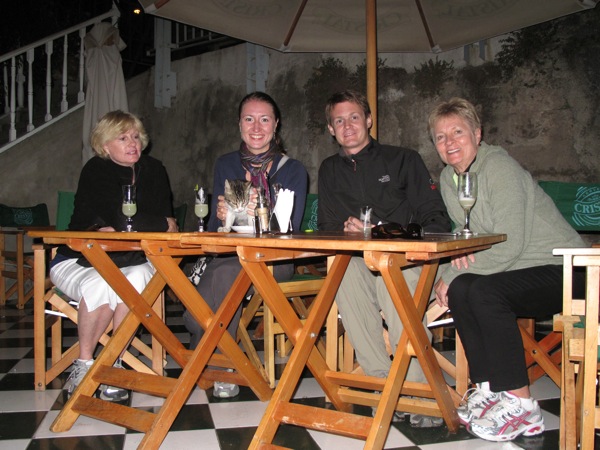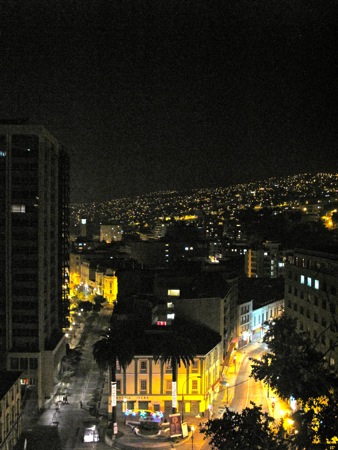Castro, Isla Chiloé, Chile to San Carlos de Bariloche, Argentina: Back Up and Over
- on 03.21.09
- Argentina, Chile
- 3 Comments
- Digg
- Del.icio.us
Tuesday, March 17
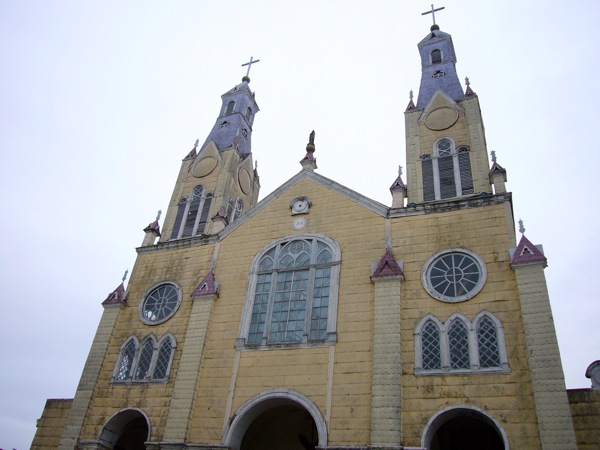
Since this was going to be a long day’s ride, we awoke early and were on the road by 8:30. We were also trying to make it to the penguin sanctuary on the Islotes de Puñihuil, a rocky outcropping of islands on the Pacific coast west of Ancud. Two species of penguin, the Magallanic and Humboldt, nest and rear young there between December and March. It was late in the season and the adults are fishing most of the day, but we were optimistic we’d get to see some.
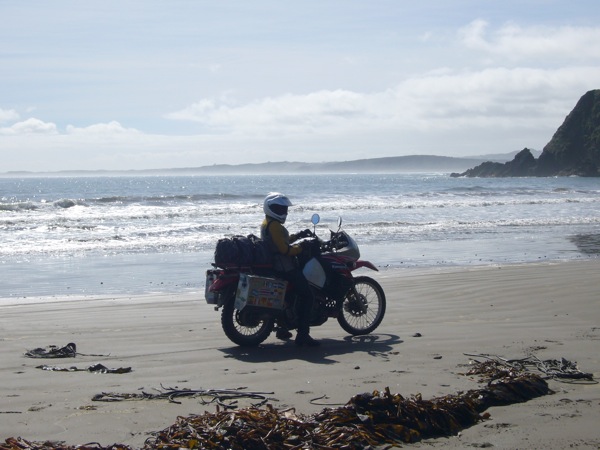
We sped north along R-5, quickly passing through the morning traffic and the section we’d skipped the previous day. We entered Ancud and followed the road along the coast west. We passed through rolling hills of farm country, past herds of cows slowly stirring to their day’s work of standing around eating grass. Occasionally we would be treated to a view of the surf rolling onto the rocky beaches below.
The road to the coast ended with us riding along a sandy beach. We rode along the beach looking for the foundation that was supposed to give naturalist tours, but it was nowhere to be found. There were plenty of other tour boat operators along the beach, so we picked a convenient one and were ready to go.
They had an amusing setup to get us in the boat. It was a small platform on big rubber wheels that the passengers stood on so they didn’t have to get their shoes wet getting into the boat. It was a bit silly but since we were wearing our riding boots we were happy to keep them dry.
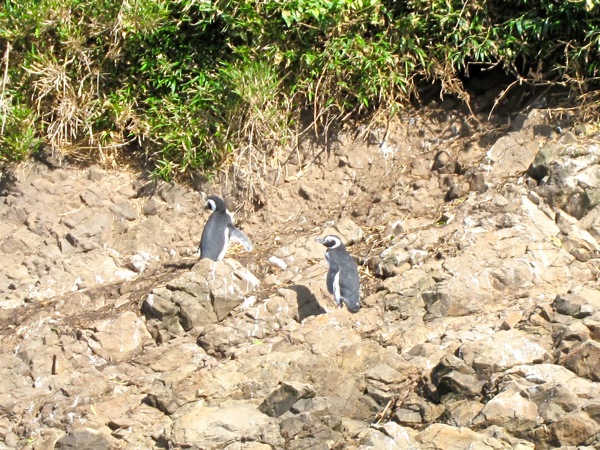
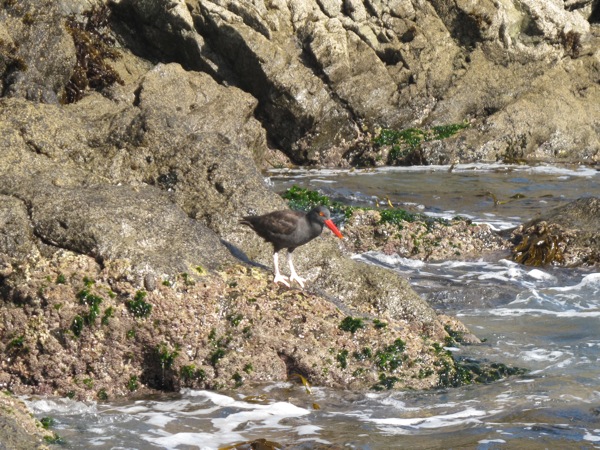
It was already 10 am when we pulled up to the first island, so most of the remaining adult penguins were off fishing. The first island we pulled up to had a few penguins standing around on the rocks, a mix of Magallanic and Humboldt. It wasn’t overly impressive, but it was still cool to see penguins in the wild. There were many species of cormorants present, and the boat operators made an effort to point them out to us.
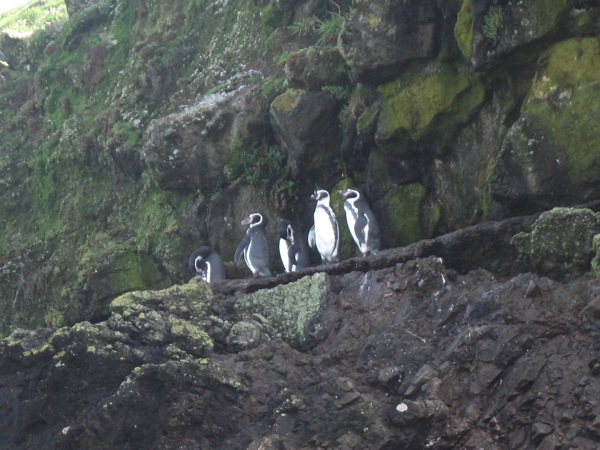
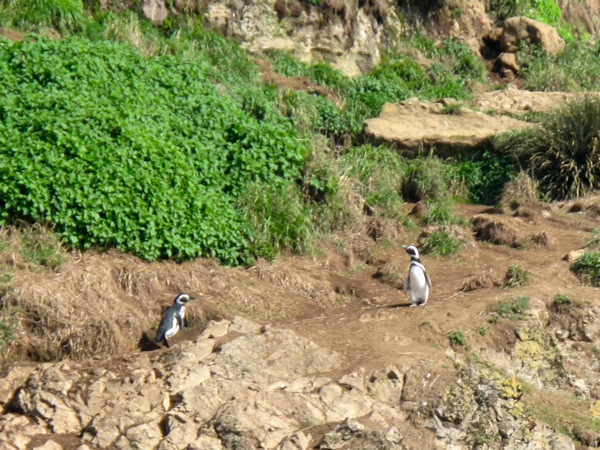
We visited two other islands and saw another handful of penguins and a few sea otters. It was enjoyable enough to be out in the surf in a boat, but there really wasn’t too much to see. We’ve seen far too many pelicans on this trip to be impressed by some more.
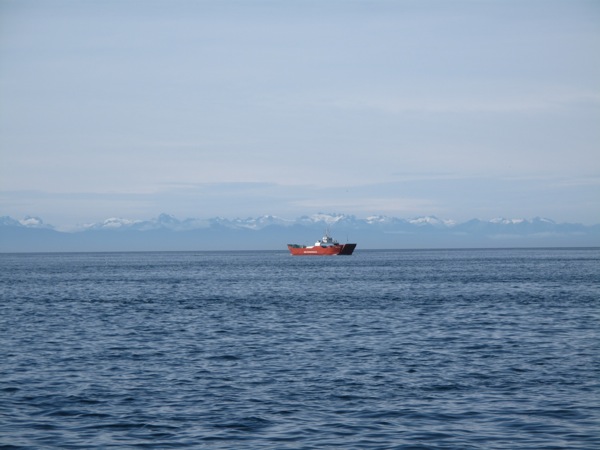
Once we were ashore, we quickly remounted and were on our way. We rode back through Ancud, and then east to the port to catch a ferry. We only had to wait a moment before a boat was ready for us, and we rode on and parked. As we crossed the channel, the view of the mountains to the east was spectacular. The snow capped peaks lined the coast of the mainland as far south as we could see. It’s a shame we couldn’t ride that route but the ferry that crosses a lake in the northern section of the Carretera Austral doesn’t run this time of year.
Back on the mainland, we settled in for an uneventful zoom north to Osorno on the now four-lane freeway of Ruta 5. Despite the coffee she had on the ferry, Inna was struggling with sleepiness on the boring straight line north. We ground out the 120 km, and then headed east. We passed Inna’s favorite fruit vendor again, but the borders are strict about crossing with produce so we didn’t stop.
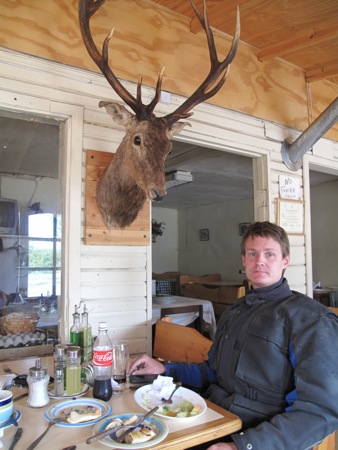
We grabbed a quick lunch at a road cafe in Entre Lagos and once we were past the national park, we finally entered unfamiliar territory. The scenery up to the border pass was a series of alpine mountains. It was beautiful, but so familiar to us that we hardly took any pictures. It either looked too much like home or not as nice as other places we’d recently been to.
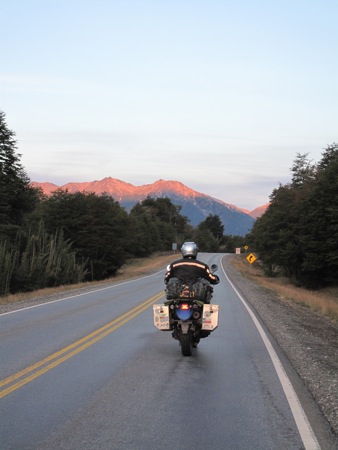
It hardly felt like we were going through a pass at all. We had done so many high elevation crossings that a pass with a peak of 4200 ft failed to impress or even really register. The border crossings were the standard South American model of efficiency. Immigration, aduana, exit, enter, immigration, aduana. As we saddled up to leave, a young man from Argentina riding the other direction stopped to chat. He was very kind and gave us his collection of Chile and Argentina maps that he no longer needed.
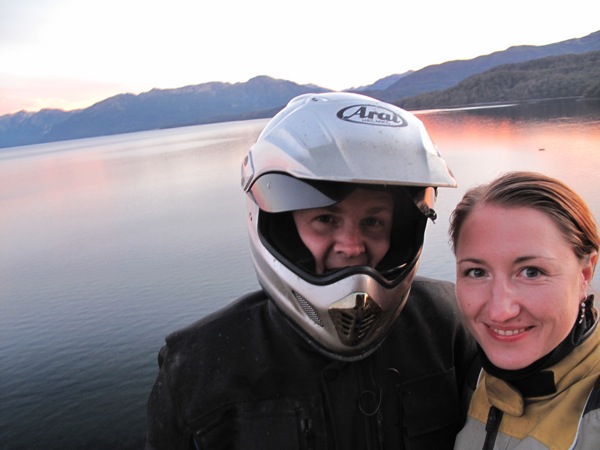
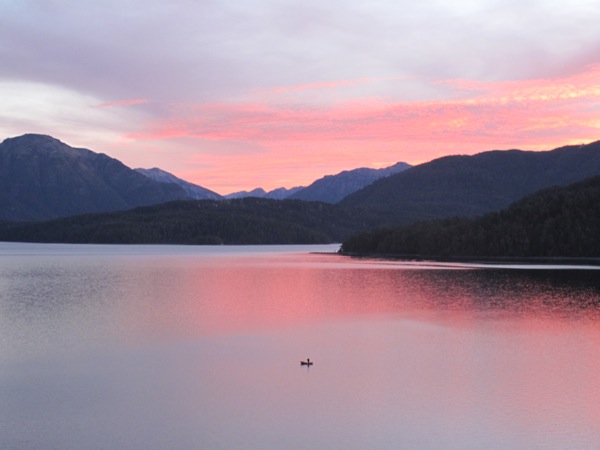
It was sunset when we arrived at the vista for Lago Angostura. The sun had colored the sky the most miraculous orange and the lake itself was stunningly beautiful. It really hurt us not to be carrying any camping gear as camping in the parks along this lake must be a magical experience. We soaked up the view as long as we could, but it was getting dark.
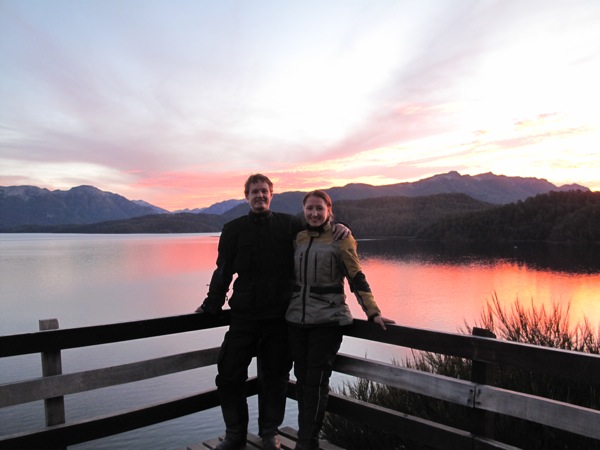
We passed through Villa La Angostura and really wished we could stop, but according to the book everything there was far out of our price range. It looked like a lovely town. We had about 70 km more in the dark to go to Bariloche. We followed our standard night riding tactic and found a car going our speed and just followed them.
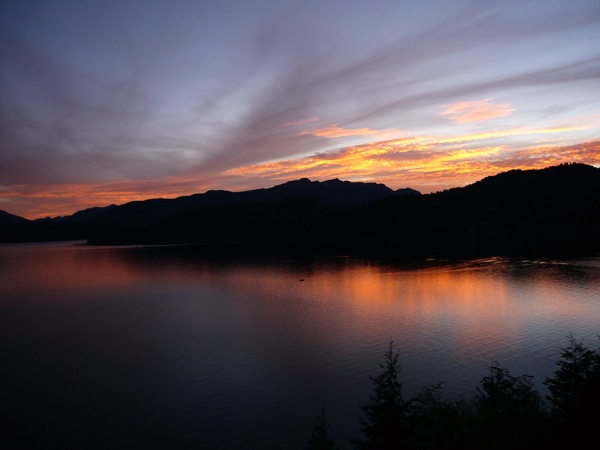
In town, we looked hard for a cheap hotel, but most were either full, or vastly overpriced. Bariloche is an expensive town. We finally were recommended a hostel that wasn’t outrageously priced. It lacked parking and internet. We parked on the bikes on the sidewalk in front of the windows so the receptionist could watch them. We grabbed some take out pizza for a late dinner and looked forward to sleeping in the next morning.
